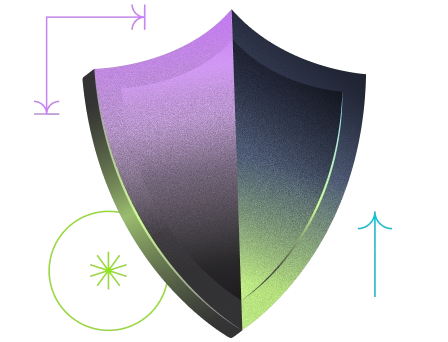Various tools are now available to facilitate and secure the contracting process. Among these solutions are the electronic signature, digital archiving and evidence records. A new tool will soon join these solutions: the smart contract.
To understand what a smart contract is, we’ll start with the definition of a traditional contract:
A contract is an agreement between one or more parties—natural or legal—who undertake to give, do or not to do something to someone. Formal or informal, the contracting process typically happens in person. The contract is drawn up in writing to formalise its terms and determine the legal obligations of the contracting parties. Legally binding, the contract is formed when the parties meet an agreement on the terms.
The smart contract takes all the notions of a contract but is the result of a computer program written in a blockchain, in the same way as cryptocurrency.
What is a blockchain?
A blockchain is a database that is distributed across multiple channels, allowing information to be stored and exchanged securely. The distributed nature of this technology refers to the fact information is shared by all users. Blockchains have four key advantages:
- Accessible
- Secure
- Consistent
- Reliable
A blockchain is, as its name indicates, a chain of blocks collecting all the operations carried out within a system. Each block gathers a set of operations recorded over a defined period, following that of the previous block. Once the period is over, this block is subject to verification and validation by "miners". Miners are users who inspect and validate the transactions recorded on the blockchain via high-performance computers. Once validated, a block is time-stamped and added to the blockchain, and then becomes visible to all users.
These transactions are encrypted, unalterable and recorded permanently and reliably by the system.
The blockchain can be broken down into five steps:
- A transaction is carried out from point A to point B.
- A set of digital transactions is grouped in what is called a block.
- The whole block is validated by network nodes by using technical and cryptographic means.
- The block is dated and added to the blockchain accessible by all users.
- B receives the transaction from A.
A blockchain is neither controlled nor stored by a central authority. Blocks are stored across the entire network, i.e. on each of the network’s devices. These are referred to as network nodes. Some users will store only part of the blockchain, and others will store all the data associated with the blockchain since its creation. This distribution of the database guarantees backup and limits associated security risks.
This distribution means the data cannot be altered by individual initiative; the modification of already recorded data requires a majority of the system’s users. A group of miners holding over half—i.e. 51% or more—of the total mining capacity of the system could modify the structure of the blockchain and thus the recorded information.
Example: cryptocurrency
The most widely known example of blockchain is digital currencies. Cryptocurrency is an electronic, virtual and encrypted currency that has no physical form. These currencies are exchanged via blockchain, under the control of the computer and all the users that form the system. Unlike ‘real’ money, no central authority, such as banks, controls the flow.
Encryption ensures that cryptocurrency is only accessible to those who have a code or personal information belonging to the account holder, such as a fingerprint.
The blockchain acts as a general ledger recording transactions and ensuring the security of cryptocurrency through a distributed computer network and encryption processes.
Smart contract: an entirely paperless contract
The smart contract is an "intelligent contract" generated by an automated computer program. This computer protocol automates an action when prerequisite conditions are met.
The objective of the smart contract is to make it possible to carry out all types of transactions, mostly financial (not exclusively).
The concept of the smart contract derives from blockchain; smart contracts are already present in both blockchain and cryptocurrency. These autonomous programs make cryptocurrency transactions possible within a blockchain.
In practice, a smart contract automatically executes predefined conditions written in a blockchain. Only the computer code can decide whether a contract has been fully or partially executed, making these protocols "smart".
All the functions of a smart contract are carried out by a computer. When the pre-established conditions are met, a contract will come be established and each contractor will be a debtor to his obligations.
Unlike its traditional paper counterpart, the smart contract not only defines the rules of an agreement between several parties, but it also fixes the rules of the agreement in the blockchain, ensuring the transfer of an asset when the contractual conditions are met. The entire contracting process is therefore automated, from the drafting to the termination of the contract, ensuring the process is certified.
The future of smart contracts in contractual relationships
Smart contracts could revolutionize contractual relations. For example, the automatic nature of these contracts could lead to the cancellation of a contract or the suspension of payment in the event of a contract’s terms being breached, or total or partial non-performance of an obligation. Automatic reimbursement is also one of the possibilities offered by intelligent contracts.
The purpose of smart contracts is to facilitate transactions between actors who do not know each other, to ensure that each contracting party meets its commitments, and to avoid any falsification. In other words, they reduce payment delays and the risk of error, but also avoid possible friction around the terms of the contract and mutual obligations.
From a legal standpoint, this technology would make it possible to relieve the judicial system of all disputes related to contracts. The secure and intelligent nature of these protocols leaves no room for hesitation or interpretation, as contracts would have to be executed in the terms defined and accepted, without the possibility of bypassing the system.
The sectors concerned
There are many opportunities for this new technology. The sectors concerned are diverse, for example, insurance, banking, logistics, real estate, food processing.
The nature of the transactions is also varied and diverse, for example, service, rental, sale, etc.
Nick Szabo, the pioneer of the concept, gave the example of a vehicle leasing contract.
If the owner fails to make payments, the smart contract invokes the lien protocol, which returns control of the car keys to the bank.
Today, the legal framework of smarts contracts is not yet defined by the European jurisdiction. However, as this new technology is booming, the courts will have to decide whether it should be included in current contract law or whether a new legal framework should be created for these computer programs.
Electronic signatures and smart contracts
The electronic signature formalizes the process between the offer and acceptance of the co-contractors. It is currently considered the tool par excellence for the conclusion of a contract with an electronic certificate as well as an evidentiary file guaranteeing the legal value of the contract.
The electronic signature is a solution that allows you to sign any document (contracts, estimates, agreements, etc.) electronically. It has many advantages including speeding up the processes related to the signing of a document and digitally archiving these signed documents. The electronic signature serves as a real source of financial savings for companies by eliminating printing and delivery costs and has a huge environmental impact.
Smart contracts, associated with the blockchain, will guarantee a contract is executed or cancelled autonomously and automatically per its pre-determined conditions.
Both these tools secure data and obligations and make archiving more secure and reliable. The combination of the electronic signature and smarts contracts will make it possible—when smarts contracts have defined legal framework—to drastically reduce all conflicts of interest linked to contracts.
Smart contracts further limit IT security risks. Currently, it is easier to ‘hack’ a human on his ability to contract, for example, than it is to hack an encrypted, uninterpretable code.
What risks are associated with this new technology?
As with any new technology, smart contracts carry risks and may raise concerns. Since the process is entirely automated, the source of information is a cause for concern. Although this process is tamper-proof, the conditions of its execution can be "falsified" to obtain the execution of a contract.
Coming back to the 51% rule mentioned above, the electronic signature would alleviate this problem if a group of miners managed to gather more than 50% of the mining capacity of the system. The modification of transactions would then be blocked by the security levels associated with the electronic signature, preventing hackers from carrying out transactions by impersonating other users.
The limitation of this new technology is the control of information sources. The analysis of data sources is the basis of all protocols. How can we judge a source to be reliable to enforce a particular clause? This is undoubtedly one of the limitations of smart contracts.
The electronic signature provides guarantees and security, meaning it could be one of the solutions to this problem.







